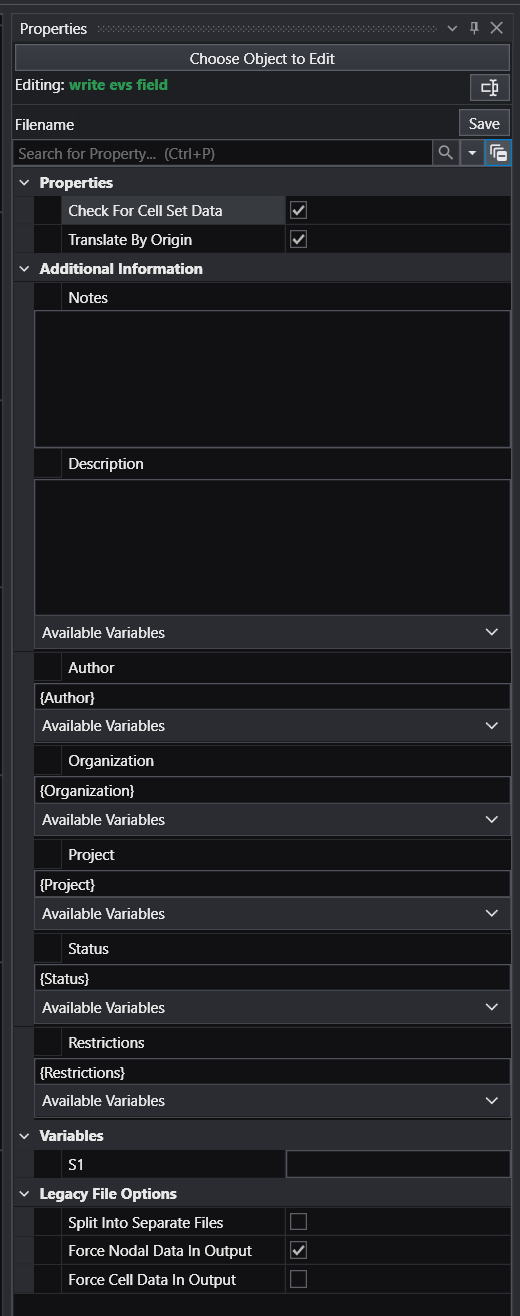write evs field
The write evs field module creates a file in one of several formats containing the mesh and nodal and/or cell data component information sent to the input port.
This module is useful for writing the output of modules which manipulate or interpolate data (3d estimation , 2d estimation, etc.) so that the data will not need to be processed in the future.
The saved and processed data can be read using read evs field, which is much faster than reprocessing the data.
Principal recommended format: EF2
-
The newest and strongly recommended format is EF2. This format is capable of containing additional field data and mesh types which are not supported in our Legacy format. Please note that this is the only LOSSLESS format for current and future EVS fields. Although the files created in EF2 format are generally larger than >EFBs, the further subsetting and/or processing of these updated fields can be dramatically more efficient.
- Uniform fields
- Geology (from gridding and horizons)
- Structured fields (such as irregular fields read in from Read_Field)
- Unstructured Cell Data (UCD format) general grids with nodal and/or cell data
- Special fields containing spheres (which are points with radii)
- Special fields containing color data (such as LIDAR data)
Legacy formats:
- The legacy formats below were the recommended formats in software releases before 2024. With our enhancements to EVS Fields, these formats must be considered LOSSY, meaning that some data and the (EF2) optimized grids will be compromised if these formats are use. We strongly recommend using theEF2 format.
- .eff ASCII format, best if you want to be able to open the file in an editor or print it. For a description of the .EFF file formats click here.
- .efz GNU Zip compressed ASCII, same as .eff but in a zip archive
- .efb binary compressed format, the smallest & fastest format due to its binary form
Module Input Ports
- Geologic legend Information [Geology legend] Accepts the geologic material information for the legend module.
- Input Field [Field] Accepts the field to be saved.
- File Notes [String / minor] Accepts a string to document the settings used to create the field.
Module Parameters
There are only a few parameters in write evs field, but they provide important functionality and should be understood.
- Check for Cell Set Data (EF2 Only): Causes any cell data that is constant across a cell set to be saved as cell set data. This is more efficient and is recommended.
- Translate by (Application) Origin): Normally on, this should be turned off if the contents represent content which is not in your application origin. Examples are glyphs or inputs to modules such as cross section tubes
- LEGACY FILE OPTIONS
- Split Into Separate Files: This toggle applies only to EFF format files and makes it easier to create your own EFF files from similar data. It separates the header file (.eff) from the coordinates, data and connectivity.
- Force Nodal in Output: This toggle is on by default and ensures that fields without data are tagged as having data because many EVS modules may not allow connections for fields without data. It does not add data, it only tags the file as having data (even if it doesn't)
- Force Cell in Output: Similar to the toggle above, but needed far less often.
